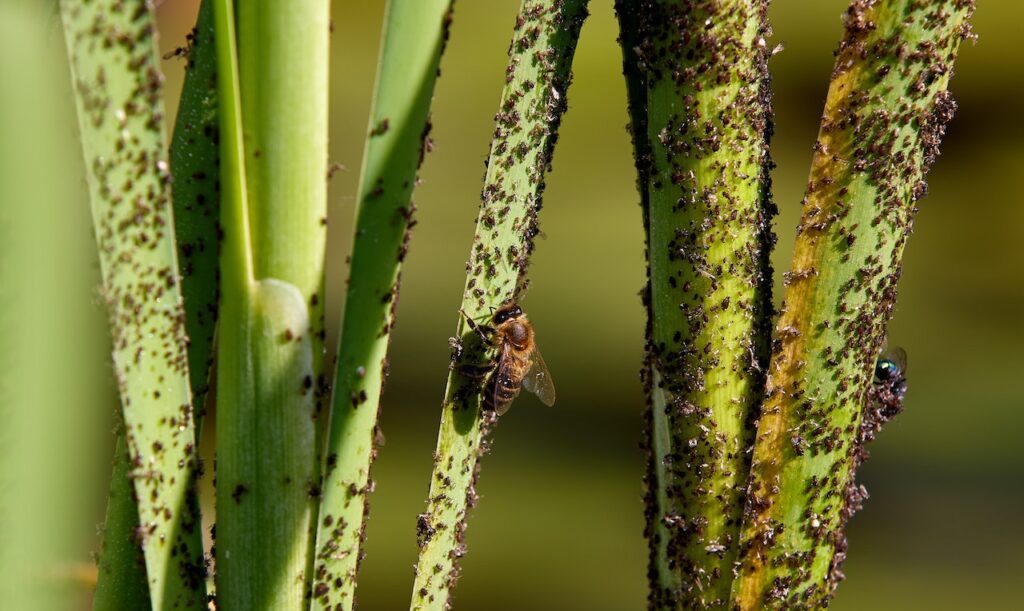A lush, green lawn is the dream of every homeowner, but achieving and maintaining it can be a challenging task, especially when faced with pesky lawn pests. From invasive insects to voracious rodents, these uninvited guests can wreak havoc on your lawn, turning your green oasis into a nightmare. However, with the right knowledge and a proactive approach, you can create a pest-resistant lawn that will thrive all year round. In this article, we will explore effective tips and techniques to battle lawn pests and reclaim your yard.
Know Your Enemy: Identify Common Pests
The first step in combating lawn pests is to know what you’re up against. Familiarize yourself with common lawn pests in your region. These may include grubs, ants, chinch bugs, cutworms, aphids, and various beetles. By understanding their life cycles and habits, you can adopt targeted strategies for prevention and control.
Maintain a Healthy Lawn
A healthy lawn is less susceptible to pest infestations. Regularly follow proper lawn care practices such as mowing at the appropriate height, watering deeply but infrequently, and fertilizing based on the needs of your grass type. A well-nourished and properly cared-for lawn will have strong roots and be better equipped to withstand pest attacks.
Proper Watering Practices
Watering plays a crucial role in pest prevention. Overwatering can lead to fungal diseases and attract certain pests, while underwatering weakens the grass and makes it more vulnerable. Water in the early morning or late evening to reduce evaporation, and ensure the water reaches the root zone effectively.
Encourage Beneficial Insects
Not all insects are harmful to your lawn. Some are beneficial predators that naturally control pest populations. Attract ladybugs, lacewings, and other beneficial insects by planting flowers like marigolds, daisies, and yarrow. These insects will help keep destructive pests in check.
Implement Integrated Pest Management (IPM)
IPM is a holistic approach that combines prevention, monitoring, and intervention to manage pests effectively and minimize the use of chemicals. Identify and monitor pest populations regularly, and use targeted treatments only when necessary.
Choose Resistant Grass Varieties
When establishing or renovating your lawn, opt for grass varieties that are naturally resistant to common pests in your area. Consult with local lawn care experts to choose the best grass types that suit your climate and soil conditions.
Aerate and Dethatch Your Lawn
Aeration improves soil drainage and helps oxygen reach the grassroots, promoting a healthy lawn. Dethatching removes the layer of dead organic matter where pests can hide and thrive. Consider aerating and dethatching your lawn at least once a year.
Practice Proper Lawn Mowing
Mow your lawn regularly, but avoid cutting more than one-third of the grass blades at a time. Taller grass shades the soil, preventing weed growth and making it less appealing to certain pests.
Use Organic Pest Control Methods
If pest populations are getting out of hand, opt for organic pest control methods first. These can include neem oil, insecticidal soaps, and diatomaceous earth. They are less harmful to beneficial insects and the environment.
Seek Professional Help When Needed
If you’re unsure about pest identification or control methods, don’t hesitate to seek advice from lawn care specialists. Professional experts can accurately diagnose the issue and provide tailored solutions for your lawn’s specific needs.
Battling lawn pests and maintaining a pest-resistant lawn requires a combination of proper lawn care practices, early detection, and targeted interventions. By being proactive and employing these tips and techniques, you can create a beautiful, healthy, and pest-free lawn that will be the envy of your neighborhood. Remember that patience and consistency are key in the ongoing battle against lawn pests, and with time, your efforts will be rewarded with a thriving, pest-resistant lawn that you can enjoy year after year.

Comments